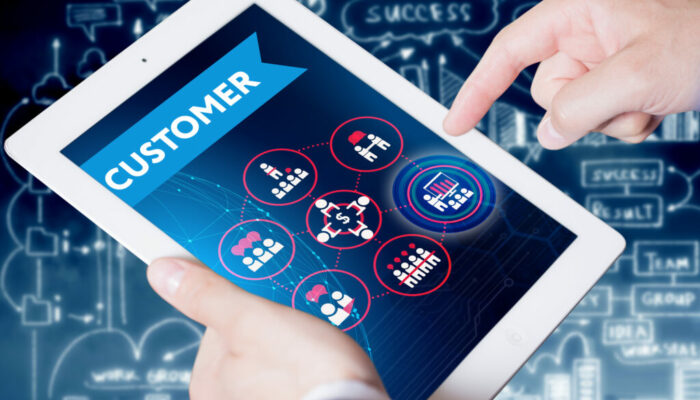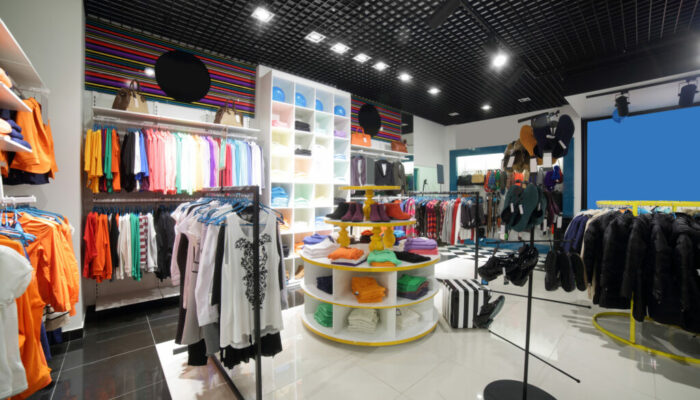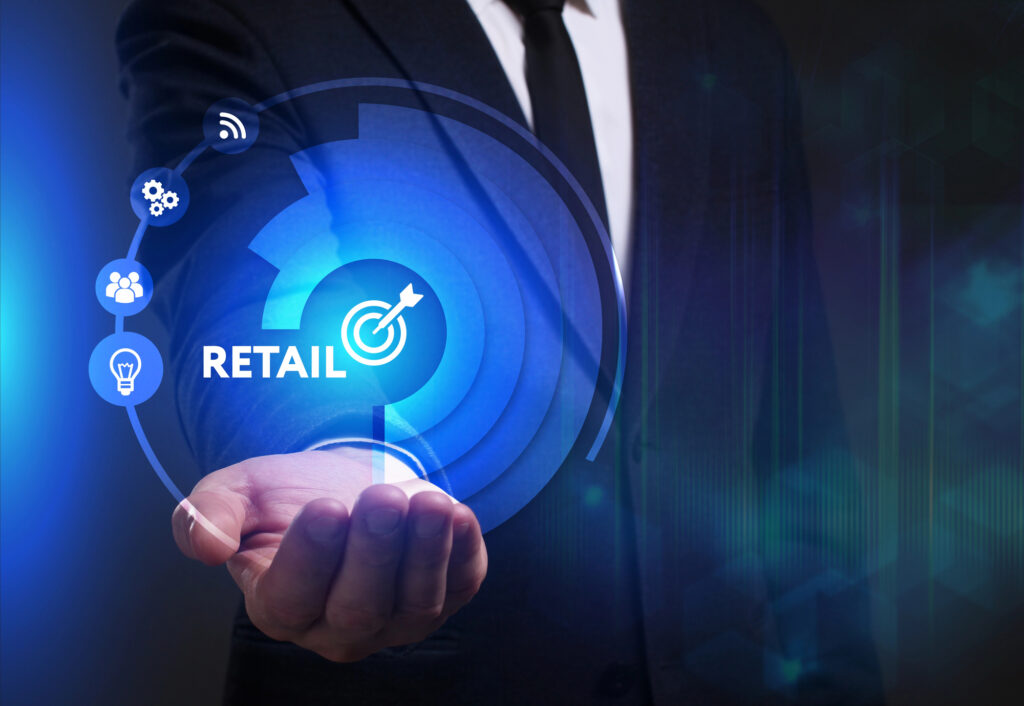Heading into 2023, the retail sector is witnessing significant transformations, paving the way for substantial retail growth. This evolution is marked by the rapid adoption of innovative technologies and an enhanced emphasis on customer experiences. These factors collectively signal a vibrant and optimistic future for the retail industry. In this discussion, we’ll explore the key trends that are driving this momentum in retail growth. Before we delve deeper, for those seeking practical strategies and insights to capitalize on these trends for retail growth, Forbes offers valuable guidance. Now, let’s get started with our exploration!
In this post, we’ll go over:
- Personalization Reigns Supreme
- Rise of The Phygital Experience
- Sustainability is No Longer Optional
- Direct-To-Consumer (DTC) Models Are Booming
- Experiential Retail Takes Center Stage
- Omni-Channel is Omni-Presence
Personalization Reigns Supreme

In today’s retail growth landscape, a crucial factor driving customer satisfaction and loyalty is personalization. Gone are the days of generic, one-size-fits-all approaches. Modern consumers are actively seeking personalized experiences tailored to their specific needs and preferences. This trend spans various retail sectors, from skincare products addressing unique skin concerns to fashion brands curating outfit suggestions based on individual purchase history.
Understanding Customer Preferences
Retailers can analyze customer data to gain insights into individual preferences. This can include purchase history, product preferences, preferred communication channels, and even the timing of purchases. By understanding these specifics, retailers can craft personalized offerings and experiences.
Tailored Product Recommendations
Utilize data analysis tools like Posibolt to comprehend customer behaviors. For instance, if a customer frequently purchases athletic wear, recommending new arrivals in that category during their visit to the online store can significantly enhance their shopping experience. Similarly, suggesting complementary products or accessories based on previous purchases can boost sales and customer satisfaction.
Personalized Communication
Beyond product recommendations, personalized communication is key. Addressing customers by their name in emails or messages and sending them exclusive offers tailored to their interests can create a sense of value. For example, if a customer has shown a preference for organic products, sending them updates on new organic arrivals or exclusive discounts on these items can foster a strong connection.
Feedback Loops
Establish feedback mechanisms where customers can rate their satisfaction with the personalized suggestions. This feedback loop is invaluable; it allows retailers to continuously refine their personalization strategies based on real-time responses.
Consider a scenario where a customer, Sarah, frequently purchases organic beauty products. Utilizing data analytics, a retailer can identify this pattern and send Sarah personalized recommendations, such as new organic skincare arrivals or limited-time discounts on her favorite brands. By addressing her specific interests, the retailer enhances Sarah’s shopping experience, increasing the likelihood of her making a purchase. Moreover, if Sarah provides positive feedback about these personalized suggestions, the retailer can be confident in the effectiveness of their personalization strategy. By embracing personalization, retailers can establish deeper connections with customers, increase sales, and foster brand loyalty. Tools like Posibolt empower retailers to transform customer data into personalized shopping experiences, ensuring their retail strategies align perfectly with individual preferences and needs.
Rise of The "Phygital" Experience

A key driver of retail growth is the rise of the “Phygital” paradigm, blending physical and digital realms. This innovative approach harmonizes brick-and-mortar elements with the convenience of online platforms, crafting a futuristic shopping experience that propels consumer engagement.
Virtual Try-Ons and Augmented Reality (AR)
Phygital experiences encompass technologies like virtual dressing rooms and AR applications. Customers can virtually try on clothing items, visualize furniture in their homes, or even test cosmetics virtually. For instance, a customer interested in buying a new lipstick can use an AR app to see how different shades look on their own face before making a purchase decision. This eliminates the guesswork and enhances customer confidence.
Seamless Online-to-Offline Integration
Phygital retail seamlessly connects online and offline shopping experiences. For example, a customer might browse products online, select items, and then choose to pick them up in a physical store. This integration ensures a smooth transition between digital exploration and in-store interactions, offering convenience and flexibility to customers.
Interactive In-Store Displays
Physical stores can incorporate interactive displays powered by digital technology. For instance, a clothing store might have touchscreens that allow customers to browse different styles and colors not physically available in the store. These displays provide a bridge between the physical and digital worlds, expanding the product range available to customers in-store.
Enhanced Customer Engagement
Phygital experiences enhance customer engagement by offering immersive and interactive elements. For example, an electronics store could use VR (Virtual Reality) setups for customers to experience products like gaming consoles or home theater systems before purchasing. This hands-on interaction creates memorable experiences, increasing the likelihood of sales.
Imagine a customer, Alex, looking to buy a new sofa for their living room. Using the retailer’s mobile app, Alex can see how different sofas look in their actual living space through AR technology. Once satisfied with a particular sofa, they visit the physical store to touch and feel the fabric, confirming their choice before making the purchase. This seamless blend of digital visualization and in-store experience not only simplifies the decision-making process for Alex but also strengthens their connection with the brand. By embracing the Phygital trend, retailers can bridge the gap between online convenience and the tangible experiences customers seek in physical stores. Integrating technologies like virtual try-ons, AR, and interactive displays transforms the shopping journey into an engaging and futuristic adventure, setting the stage for increased customer satisfaction and retention.
Sustainability is No Longer Optional

In the realm of retail growth, sustainability has evolved from a choice to an imperative. In 2023, consumers are progressively eco-conscious, insisting on brands that resonate with their values. Beyond a trend, sustainability represents a fundamental shift in consumer behavior. Retailers adopting eco-friendly practices not only meet customer expectations but also play a positive role in environmental conservation, shaping a more sustainable future.
Sustainable Sourcing
Ethical and sustainable sourcing involves procuring products or materials in ways that do not harm the environment or exploit labor. For instance, a clothing retailer might source organic cotton to reduce the use of pesticides and promote environmentally friendly farming practices. Transparently communicating these efforts to customers builds trust and loyalty.
Environmentally Friendly Packaging
Eco-friendly packaging solutions, such as biodegradable materials or minimalistic packaging, significantly reduce the environmental impact. For example, a retailer could use compostable bags or eliminate unnecessary layers of packaging, reducing waste and demonstrating a commitment to the planet.
Reducing Carbon Footprint
Retailers can adopt energy-efficient practices, like utilizing solar power or optimizing transportation routes, to reduce their carbon footprint. These efforts showcase a commitment to environmental preservation and can be highlighted in marketing materials to resonate with eco-conscious consumers.
Waste Reduction and Recycling Initiatives
Implementing recycling programs within stores and encouraging customers to recycle their old products, such as electronics or clothing, promotes a circular economy. Some retailers offer incentives, like discounts on new purchases, to customers who recycle old items at their stores, encouraging responsible disposal.
Consider a retailer specializing in skincare products. To embrace sustainability, they source ingredients from local farmers who practice organic and eco-friendly farming methods. The retailer also invests in research to use minimal and recyclable packaging for their products, reducing plastic waste. In-store, they have a recycling station where customers can return empty product containers. Additionally, the retailer educates customers through their website and social media platforms about the importance of sustainable beauty practices. By actively engaging in sustainable initiatives and communicating these efforts transparently, this retailer not only appeals to eco-conscious consumers but also educates others about the significance of environmentally responsible choices. This not only boosts their brand image but also contributes to a greener planet. Embracing sustainability is not just about compliance; it’s a powerful way for retailers to connect with their socially and environmentally aware customer base. By integrating eco-friendly practices into their operations and communicating these initiatives effectively, retailers can build a loyal customer following while making a positive impact on the planet.
Direct-To-Consumer (DTC) Models Are Booming

The forefront of retail growth is illuminated by the Direct-to-Consumer (DTC) approach. Brands, positioned at the heart of direct connections with customers, cut out middlemen. This model, akin to a backstage pass, empowers brands for direct engagement, valuable insights, and tailored offerings without third-party interference. A transformative strategy, it reshapes the dynamics of customer-brand interactions, fueling the evolution of retail in the landscape of growth.
Cutting Out the Middleman
Traditionally, products go from manufacturers to distributors, then to retailers before reaching the consumers. DTC skips these steps, allowing brands to sell directly to customers. This not only simplifies the supply chain but also often results in cost savings, which can be passed on to the customers.
Building Relationships
DTC brands can establish a direct relationship with their customers. They can interact through social media, emails, or even direct messaging, creating a more personal connection. This direct communication helps in understanding customer needs and preferences, enabling the brand to tailor their products or services accordingly.
Data-Driven Insights
By selling directly, brands can gather data on customer behavior, preferences, and purchase history. Analyzing this data provides valuable insights. For instance, a DTC clothing brand can analyze which designs are popular in specific regions and adjust their inventory accordingly. This data-driven approach ensures that products align closely with what customers want.
Customization and Personalization
DTC models allow for a high degree of customization. Brands can offer personalized products or services based on individual preferences. For example, a DTC furniture company might allow customers to customize the color, size, and features of their furniture pieces, ensuring a unique and tailored experience for each buyer.
Imagine a shoe company embracing the DTC model. By selling directly to customers through their website, they not only streamline their sales process but also collect data on customer preferences. They notice a trend – customers in certain areas prefer eco-friendly materials. With this insight, they launch a new line of sustainable shoes, tailored specifically to meet the demands of this eco-conscious audience. By directly communicating with their customers through social media and email newsletters, they also offer personalized discounts based on past purchases, fostering brand loyalty. By adopting a DTC approach, this shoe company isn’t just selling shoes; they’re building a community of satisfied customers who appreciate the personalized experience. The brand’s agility to respond directly to customer demands gives them a competitive edge and enhances customer loyalty, ensuring a steady growth trajectory.
Experiential Retail Takes Center Stage

In the era of retail growth, it’s not merely about product sales; it’s about crafting memorable experiences. The buzzword is experiential retail, underscoring the significance of engaging customers uniquely and immersively. Whether through in-store cafes, workshops, or interactive displays, brands embracing these immersive experiences stand out, capturing customer attention and fostering loyalty in the dynamic landscape of modern retail growth.
In-Store Cafes and Lounges
Retailers are transforming shopping spaces into social hubs. In-store cafes or lounges provide a comfortable environment where customers can relax, have a coffee, and interact. For example, a bookstore might have a cafe where customers can enjoy a cup of coffee while reading a book, creating a cozy atmosphere that encourages extended stays.
Workshops and Events
Hosting regular workshops or events related to the products sold creates a sense of community. For instance, a home decor store could organize DIY workshops where customers learn to make their own crafts. These events not only provide valuable skills but also strengthen the bond between the brand and the customer.
Interactive Displays and Technology
Brands are incorporating technology to create interactive displays. For example, a tech store might have tablets where customers can compare different products’ features easily. Interactive displays engage customers actively, making the shopping experience informative and enjoyable.
Sensory Experiences
Retailers are focusing on engaging multiple senses. For instance, a clothing store might use specific scents to create a pleasant atmosphere, enhancing the overall ambiance. Similarly, playing soothing music or incorporating visually appealing displays can captivate customers, making their time in the store more enjoyable.
Consider a gardening store that embraces experiential retail. They have a dedicated space within the store where customers can participate in gardening workshops, learning about different plants and gardening techniques. Additionally, the store features interactive displays where customers can virtually design their gardens, visualizing how different plants would look together. To enhance the sensory experience, the store incorporates natural scents of flowers and plants, creating a refreshing ambiance. By offering these experiences, the gardening store doesn’t just sell gardening supplies; they provide a platform for customers to learn, interact, and indulge their passion for gardening. Customers not only leave with products but also with new knowledge and inspiration. This enriching experience not only attracts customers initially but ensures their return, as they value the store not just as a shopping destination but as a place of learning and enjoyment.
Omni-Channel is Omni-Presence in Retail Growth

In the realm of retail growth, the shopping experience transcends a singular channel; it’s a dynamic fusion of online and offline interactions. Customers discover products on social media, explore details on a brand’s website, and complete purchases in physical stores. This seamless transition across diverse touchpoints defines modern retail. Essential for retailers in the digital age is the capability to provide a consistent and integrated shopping journey, ensuring a cohesive experience across various platforms.
Social Media Integration
Retailers are leveraging social media platforms not just for marketing but also as sales channels. Customers discover products through social media posts and advertisements. For instance, a clothing brand might showcase its latest collection on Instagram, allowing customers to explore different styles and colors.
Website as a Hub
A brand’s website serves as the central hub of information. Customers research products, read reviews, and compare prices online. It’s not just an online store but a resource for detailed product information, creating a bridge between online discovery and offline interaction.
In-Store Experience
The physical store remains a vital touchpoint. Customers might visit the store to touch and feel products before making a final decision. Knowledgeable staff, interactive displays, and a welcoming atmosphere play crucial roles in shaping the in-store experience.
Mobile Shopping
Mobile devices have become primary shopping tools. Retailers optimize their websites for mobile viewing, ensuring a seamless experience for customers browsing and making purchases on smartphones and tablets. Mobile apps also provide a direct channel for personalized offers and notifications.
Imagine a consumer, Emily, scrolling through her social media feed and stumbling upon a post from a furniture store showcasing a new line of sofas. Intrigued, she clicks on the post, leading her to the brand’s website. Here, she explores different sofa designs, reads customer reviews, and even virtually places the sofas in her living room using augmented reality features on the website. Impressed, Emily decides to visit the physical store to experience the sofas in person. At the store, the staff recognizes her preferences based on her online interactions. They show her the sofas she liked online, answer her questions, and offer additional in-store discounts for online customers. Emily, having had a seamless experience from social media discovery to website exploration and in-store interaction, decides to make a purchase. By providing a consistent and integrated experience across social media, website, and in-store interactions, this furniture store not only captures Emily’s attention but also ensures her journey is smooth and enjoyable. The store’s ability to maintain a cohesive brand presence across these channels strengthens customer trust and satisfaction, making Emily more likely to return for future purchases and recommend the store to others.
Wrapping It Up

In the retail growth landscape of 2023, selling products is just the beginning. It’s about weaving unforgettable experiences, establishing direct relationships with customers, and embracing the tidal wave of technological innovations. These trends are more than just glimpses into the future; they’re the cornerstones of successful retail. One undeniable truth stands out: retailers who not only adapt and evolve but also place customer needs at the core of their strategies are the ones destined to shine the brightest in this dynamic and ever-changing market.
Memorable Experiences
Retailers are no longer just providers of goods; they’re curators of experiences. Creating memorable moments, be it through personalized interactions, immersive in-store events, or seamless online journeys, leaves a lasting impression on customers. These experiences go beyond the transaction, building emotional connections that foster brand loyalty and positive word-of-mouth.
Direct Connections
Establishing direct relationships with customers has become a fundamental aspect of modern retail. Direct communication channels, like social media, emails, and mobile apps, enable brands to engage with customers personally. This direct interaction allows for tailored offers, immediate issue resolution, and the opportunity to listen and respond to customer feedback, strengthening the bond between the brand and its audience.
Technological Innovations
Embracing technology isn’t just an option; it’s a necessity. Retailers are integrating cutting-edge technologies, such as augmented reality, artificial intelligence, and data analytics, into their operations. These innovations enhance customer experiences, streamline processes, and provide valuable insights that inform business decisions. For example, AI-powered chatbots can offer instant customer support, and AR applications enable virtual product trials, enhancing the overall shopping experience.
Adaptability and Customer-Centricity
The retail landscape is constantly evolving. Retailers who stay ahead are those who remain adaptable to changing trends and customer preferences. Listening to customer needs, understanding their behaviors, and promptly adapting strategies based on this understanding are key. Customer-centricity, where every decision revolves around enhancing the customer experience, ensures long-term success.
Retailers in 2023 are essentially orchestrators of experiences. Consider a bookstore that not only sells books but hosts regular author events, book clubs, and writing workshops. They have a mobile app that notifies customers about upcoming events and offers personalized book recommendations based on past purchases. In-store, they have interactive displays where customers can explore the synopsis of books by scanning QR codes with their smartphones. This approach doesn’t just sell books; it creates a literary community, an experience that goes beyond the mere act of buying. Customers not only purchase books; they attend events, engage in discussions, and feel a sense of belonging. The adaptability to embrace technology, the personal touch through direct communication, and the focus on creating meaningful experiences make this bookstore not just a store but a destination for book enthusiasts. The spotlight shines brightest on those who craft experiences, establish connections, embrace technology, and prioritize the needs of their customers. By weaving these elements into their strategies, retailers don’t just survive; they thrive, becoming beacons of innovation and customer satisfaction in the retail landscape of 2023 and beyond.


7 thoughts on “Unleashing Retail Growth 6-Fold: Dominant Trends to Watch Beyond 2023”
Comments are closed.